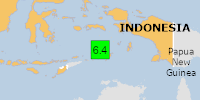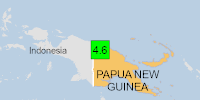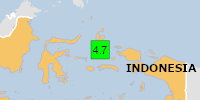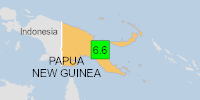Where Paths Cross in the Desert


Exploring the Tarim Basin: A Natural Marvel
Editor’s Note: This article provides the solution to the September 2025 puzzler.
The Unique Landscape of Mazartagh
In the heart of western China, the Tarim Basin presents a striking scene where a winding river and a curved ridge form a distinctive Y-shaped pattern. This colorful ridge, known as Mazartagh or Hongbaishan in Chinese, meaning “red-white mountain,” is a sight to behold even from space.
Geological Features Captured by Landsat 9
The Operational Land Imager-2 (OLI-2) on Landsat 9 captured this stunning image on September 11, 2025. The ridge extends 145 kilometers (90 miles) northwest, rising approximately 200 meters (600 feet) above the desert floor. It serves as a natural barricade, halting the southward movement of sand dunes driven by the basin’s frequent northeasterly winds.
Contrasting Rock Formations
The northern side of Mazartagh is characterized by dark red rocks composed of iron-rich sandstones and mudstones, likely formed in a dry, oxygen-rich setting like a desert dune field. Conversely, the southern formations consist of lighter gypsum and calcareous sandstone layers, typically found in shallow water environments such as lake beds.

The Vital Hotan River
Fed by glacial meltwater from the Kunlun Mountains, the Hotan River (also known as the Khotan River) is a seasonal waterway that traverses the Takla Makan Desert, eventually joining the Tarim River in the basin’s northern reaches. It is the only stream from the mountains that maintains a flow across such a vast desert expanse.
Ecological and Human Impact
The river’s banks support vegetation like poplars and salt cedars, thriving despite fluctuating water levels and saline soils. The Mazartagh ridge influences the surrounding dunes, blocking 62% of the sand and reducing dune drift by 13%, according to a research study. This results in diverse dune formations north and south of the ridge.
Historical Significance
The Hotan River’s sediments are rich in nephrite jade, a valuable mineral historically collected by hand, contributing to the area’s prominence along the ancient Silk Road. An ancient fort from the eighth century, linked to the Tibetan Empire, still overlooks the river, offering a glimpse into the region’s storied past.
Images courtesy of NASA Earth Observatory by Lauren Dauphin, utilizing Landsat data from the U.S. Geological Survey. Article by Adam Voiland.
What's Your Reaction?
 Like
0
Like
0
 Dislike
0
Dislike
0
 Love
0
Love
0
 Funny
0
Funny
0
 Angry
0
Angry
0
 Sad
0
Sad
0
 Wow
0
Wow
0





































































